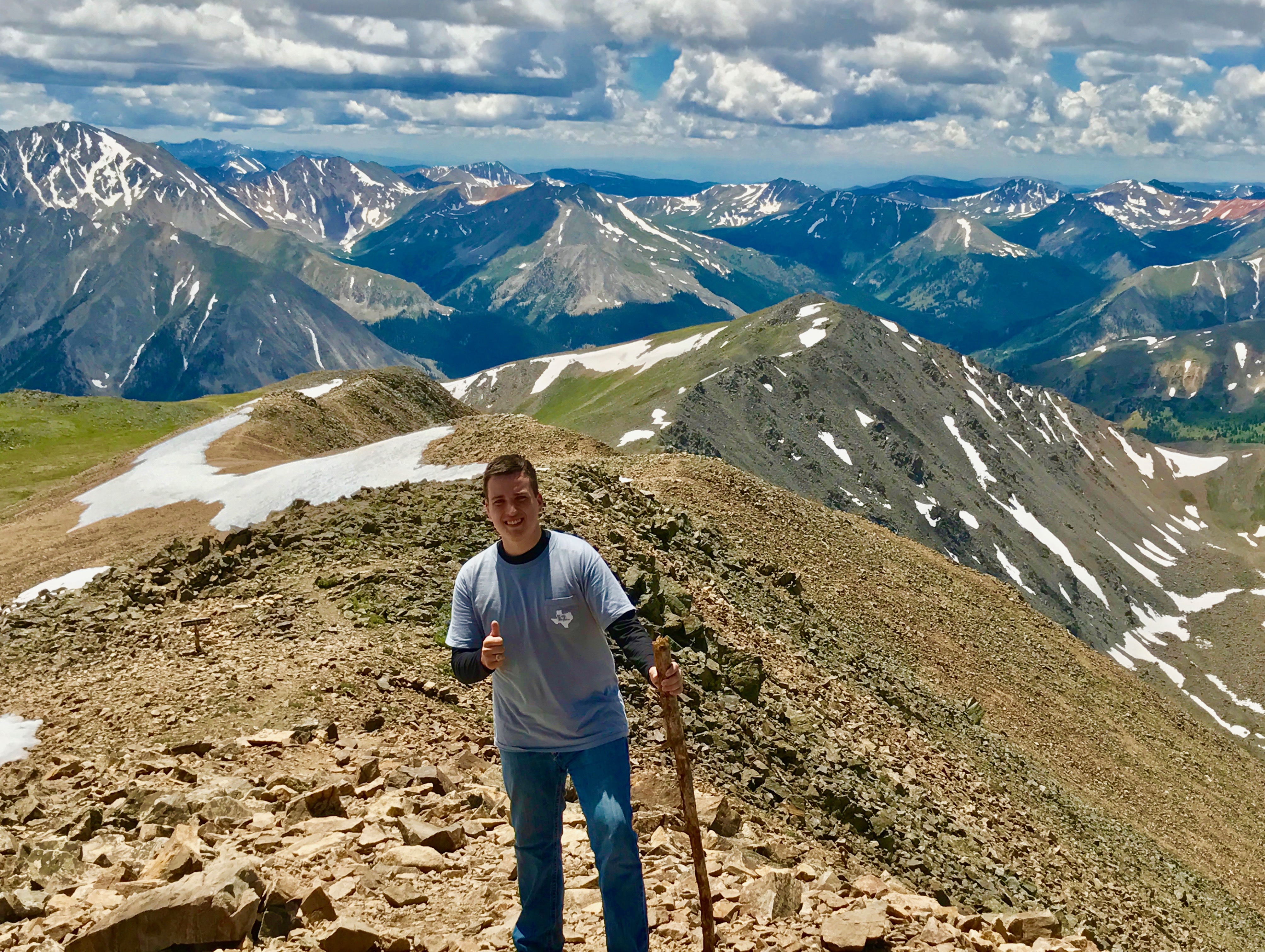
Most college students view an ideal summer as one spent on a sunbaked beach, but Texas A&M University nuclear engineering student Zachary Hardy is under a different kind of heat in New Mexico, working alongside a research team at Los Alamos National Laboratory (LANL) to try to validate a computational model for electrostatic discharge.
Hardy and his colleagues are designing and conducting a specialized experiment to attempt to validate this model developed by the Colorado School of Mines, which could have an impact on the electrostatic discharge safety procedures currently governing nuclear weapons handling. Validation of this model would remove some of the overly conservative assumptions currently used to characterize electrostatic discharge events.
“Sometimes enough charge can build up on a surface to ionize the air around it. When this happens, the air begins to conduct electricity and a spark occurs. This is the same thing that occurs when you walk on carpet and then touch something and get shocked,” Hardy said.“The primary concern for electrostatic discharge with regard to weapons is that the handling and maintenance processes could lead to a shock, potentially causing damage.”
According to Hardy, the safeguards in place likely give overestimates of the amount of energy that will be transferred from the surface where a charge is built up to the where the spark strikes. Through these experiments, Hardy and the other researchers hope that some of the costly procedures in place to prevent a spark can be eliminated while still guaranteeing safety.
“Assuming our physical results and the model’s calculated results agree, this model could be adopted for use and could soon have an impact on the weapons complex because these events could be more accurately characterized,” Hardy said.

This project has been ongoing for about two years at LANL, where Hardy worked last summer on a different project. Hardy came onto the project this summer and has been working with researchers at a variety of different levels. As an undergraduate student involved in high-end research, he says the experience has been surreal.
“Walking into LANL this summer I did not know what project I would be working on,” Hardy said. “Then I hear I am doing experimental work regarding electrostatic discharge, something I have never studied before and did not know much about. I did not think I would be involved in work this relevant or far away from my field of study this soon in my career, but I feel honored for receiving this opportunity.”
Because of Hardy’s extensive research activities at LANL and Texas A&M, he received the Nuclear Energy University Program Scholarship funded by the Department of Energy, and the John R. Lamarsh Memorial Scholarship funded by American Nuclear Society, based on a strong potential for continuing research in the field of nuclear engineering.
At Texas A&M Hardy has been conducting research under Dr. Pavel Tsvetkov, who is developing machine learning optimization techniques for a variety of applications. Hardy and Tsvetkov have applied genetic algorithms that mimic the biological process of natural selection to solve complex optimization problems in the nuclear engineering field. Thus far, the algorithm has been used to solve quantum mechanics problems and to aid in optimizing the supply chain strategy, in conjunction with Fluor and NuScale, for small modular reactors. This upcoming year they plan to use this algorithm to develop a nondestructive material characterization technique.
“In the quantum mechanics application, we based it on a genetic algorithm found in a textbook and steered it from there,” Hardy said. “We’ve been fine tuning to figure out how to construct this algorithm so that it can be applied to any suitable problem with minimal effort. There are potentially countless applications for this.”